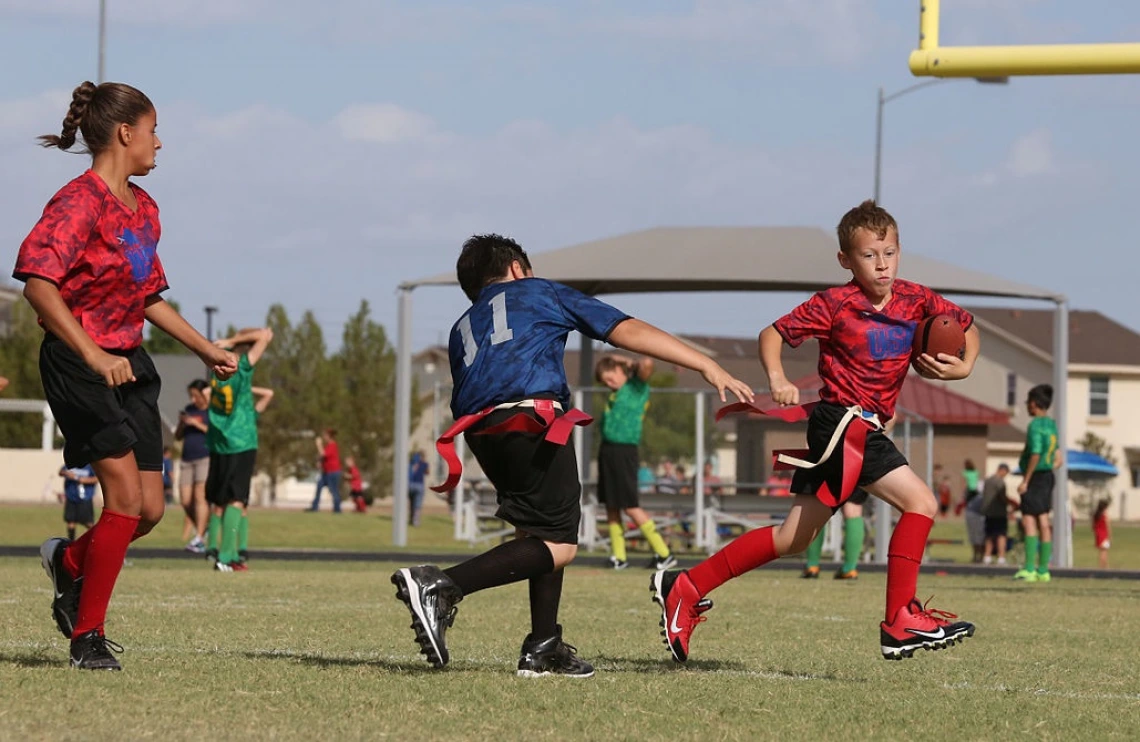7 Health & Safety Tips for Kids Playing Fall Sports
The start of a new school year can only mean one thing: fall sports season is here.

The start of a new school year can only mean one thing: fall sports season is here. As a family nurse practitioner with the Mobile Health Program, I am seeing lots of eager, young athletes at our family practice and pediatric clinics for sports physicals.
Whether it’s flag football or varsity track, sports are wonderful for children’s health and wellness, keeping them both physically active and involved with their peers. With kids spending an average of nearly six hours in front of screens every day and 17 percent of children and adolescents now classified as obese, sports participation is more important than ever. Unfortunately, sports-related illnesses and injuries do sometimes happen. However, the good news is that parents and coaches can help: smart preparation and spotting potential problems early can help keep your kids out of the emergency room and on the playing field, where they belong!
Here are some tips to help keep your young athletes healthy so they can enjoy the benefits of sports participation for years to come:
- Sun Protection: Athletes have higher rates of skin cancer than non-athletes. For outdoor activities, kids should wear sunscreen SPF 30 or higher, lightweight, light-colored clothing and a hat to keep the sun off their face. Also, try to keep children out of the sun near midday, when the sun is at its harshest.Image

- Heat: The temperatures in Southern Arizona remain hot well into the fall. Rest periods are important, especially for young children, children new to athletics and children with some medical conditions, such as diabetes. Headaches, dizziness, weakness and chills might be signs of heat-related illness: children should stop activity and cool off right away in a shady, air-conditioned place and drink water. If they don’t feel better within a few minutes, seek medical care.
- Hydration: Athletes need to drink fluids before, during and after activity. During activity, kids should take a drink at each opportunity. For long sessions, sports drinks may help, but many are high in sugar, so look for low-sugar options or mix them with water. Children’s fluid needs vary, but a good way to judge is if their urine is pale yellow to clear – this means they’re well-hydrated.
- Nutrition: Just like a car runs best with high-quality gas in the tank, athletes perform best when they eat nutritious food. Offer fresh, whole food as meals and snacks. Fresh fruit like apples, grapes or oranges; vegetables like spinach, broccoli or cauliflower; whole grains like brown rice or whole-wheat bread; beans; and lean meat and fish are all great choices. Try to limit fast food, pre-packaged snacks like chips and cookies and sweet drinks like sodas and energy drinks.
- Safety Gear: Does your child’s sport require a mouth guard? Eye protection? A helmet? Special shoes? Make sure all gear fits properly and isn’t worn out. Last year’s gear could be too small this fall. Running shoes should be replaced every 300 to 500 miles and any bike helmet that’s been in a crash should be replaced.
- Head Injuries: Any hit to the head requires immediate attention— even if the athlete is awake and feels fine. Some injuries are more serious than they look, and an injured athlete who returns to play can develop “second impact syndrome,” which is very serious. An athlete with a possible concussion shouldn’t go back to play that day. Ask the coach or trainer what their policy is, and be sure any possible head injury is evaluated, no exceptions.
- Eating Disorders: Athletes can feel pressure to control their weight, and sometimes “healthy eating” or “hard training” can go too far. Drastic weight changes, secretive or restrictive behavior around food and mood changes may be signs of an eating disorder. Some girls also experience irregular or stopped periods. At high risk for these problems are athletes in gymnastics, wrestling, dance, cheerleading and running, but any athlete can develop an eating disorder—girls or boys. Seek advice from a health-care professional if you have concerns.
For more information, please visit:
About the Author
Elizabeth Knight, PhD, DNP, FNP-C, served as a clinical assistant professor at the University of Arizona College of Nursing and a family nurse practitioner with the Mobile Heath Program. The Mobile Health Program provides patient services to approximately 2,400 people with limited access to health care each year in Southern Arizona. She focused on health promotion and health education and loves teaching patients about healthy lifestyle choices. Dr. Knight earned her Doctor of Philosophy (PhD) in Nursing and Doctor of Nursing Practice (DNP) degrees from the UA in 2015. In 2018, Dr. Knight accepted a position as an assistant professor, at the Oregon Health and Science University.

